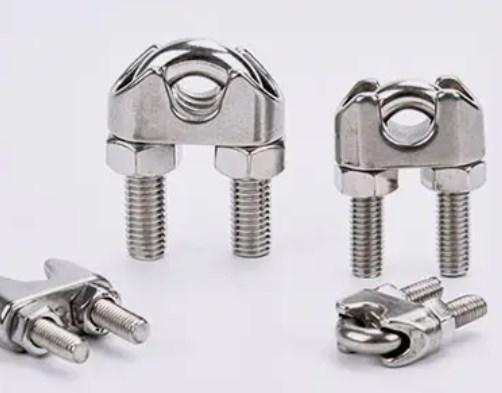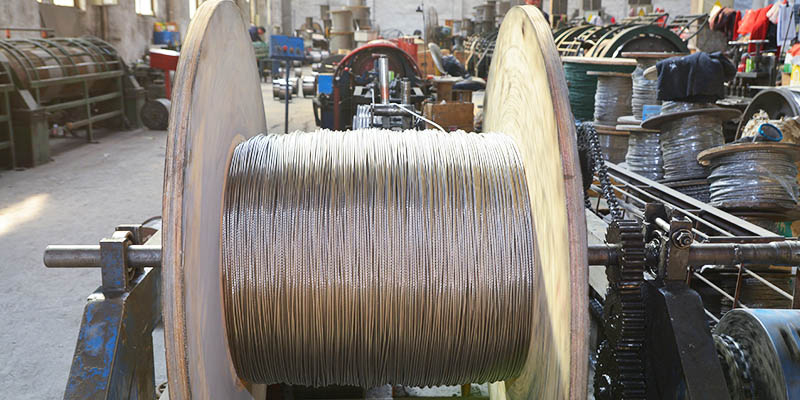1×7 Stainless Steel Wire Rope Product Introduction Overview: The 1×7 stainless steel wire rope is a high-quality, durable, and versatile wire rope constructed from a single strand of seven individual ...
See DetailsWith the rapid development of the marine industry, technological innovation in the shipbuilding and maintenance sectors relies heavily on a key component: marine hardware. It is not only a core component of a vessel's structure and functionality, but also a crucial factor in ensuring stable and safe operation in complex marine environments. Marine hardware encompasses multiple components, from structural connections to functional accessories, and its performance is directly related to the overall quality and service life of a vessel.
I. Definition and Function of Marine Hardware
Marine hardware generally refers to various metal components used in shipbuilding, assembly, and maintenance. It features high strength, corrosion resistance, oxidation resistance, and resistance to seawater erosion. Its applications encompass not only basic structures such as hull connections, cabin decoration, and deck fittings, but also key components such as anchoring systems, rudder accessories, and safety devices. The design and manufacturing standards for marine hardware are extremely stringent, requiring compliance with relevant regulations of the International Maritime Organization and classification societies to ensure long-term stable performance in the high-salt, high-humidity, and high-load environments of the ocean.
In the shipbuilding process, the rational configuration of hardware can effectively improve assembly precision and operational efficiency. Whether a small yacht or a large cargo ship, marine hardware performs multiple functions, including support, connection, fixation, and adjustment. Its importance far exceeds that of general industrial hardware.
II. Performance Requirements for Marine Hardware Materials
The unique characteristics of the marine environment dictate that marine hardware must possess superior material properties. Traditional carbon steel is susceptible to rust after long-term contact with seawater. Therefore, stainless steel, copper alloys, aluminum alloys, and special anti-corrosion alloys have gradually become mainstream materials. Stainless steel hardware is widely used in decks, hatches, handrails, and railings due to its corrosion resistance and aesthetics, while aluminum alloys occupy a key position on modern ships due to their lightweight and high-strength properties.
Surface treatment is also crucial. Processes such as electropolishing, anodizing, hot-dip galvanizing, or anti-corrosion coating can effectively extend the service life of hardware and reduce maintenance costs. For high-strength connecting components, the manufacturing process must also balance mechanical properties and fatigue resistance to ensure stability under continuous vibration and impact.

III. The Role of Marine Hardware in Different Systems
A ship is a complex mechanical system, and marine hardware plays a pivotal role in its support and connection. In the hull structure, hardware connects plates and secures components, ensuring overall structural rigidity. In the deck system, hardware secures and adjusts components like hatch covers, railings, and bollards, ensuring the deck remains reliable and secure in wind and waves.
In the propulsion and rudder systems, the precision and strength of marine hardware are crucial. High-performance hardware ensures smooth operation of propulsion units and rudder blades under heavy loads. Furthermore, hardware is extensively used in ship interior decoration and facilities, such as hatch hinges, porthole locks, and bathroom fittings. It not only impacts the user experience but also directly reflects the quality and craftsmanship of the vessel.
IV. Technological Trends in Marine Hardware Manufacturing
With the advancement of intelligent and lightweight shipbuilding, marine hardware is experiencing a new round of technological upgrades. Modern marine hardware manufacturing is shifting from traditional casting and welding processes to integrated precision machining and surface treatment. The application of CNC machining technology has significantly improved hardware precision, while automated spray painting and intelligent inspection systems have enhanced production efficiency and product consistency.
In terms of material innovation, new composite materials with enhanced corrosion resistance and reduced weight are gradually entering the market. Some high-end ships are beginning to use titanium alloys or composite coatings for hardware to achieve higher strength and corrosion resistance. Furthermore, the introduction of green manufacturing concepts has promoted the use of environmentally friendly surface treatment technologies, reducing pollution emissions during the production process and complying with international environmental standards.
V. Selection and Quality Control of Marine Hardware
The selection of marine hardware requires not only consideration of size but also comprehensive consideration of material properties, corrosion resistance, mechanical strength, and surface finish. High-quality hardware can significantly enhance the overall performance and safety of a ship. Manufacturers typically conduct production control based on international classification society certification standards, strictly controlling every step of the process, from incoming raw material inspection to finished product testing.
In terms of quality testing, modern marine hardware commonly uses methods such as spectral analysis, salt spray testing, and mechanical property testing to ensure that products can withstand long-term marine operating environments. Furthermore, the application of digital management systems enables traceability throughout the entire production process, further enhancing product consistency and reliability.
Marine hardware is an indispensable component of the shipbuilding industry chain. Its technological prowess and manufacturing quality represent the comprehensive strength of a country's shipbuilding industry. From material selection to production processes, from structural design to application performance, every step embodies the spirit of precision manufacturing.
With the accelerated development of the global marine economy, the marine hardware industry is facing increasing opportunities and challenges. Only by adhering to high-standard manufacturing and continuous innovation can we stand out in international competition. High-quality marine hardware not only ensures safe navigation of ships but also plays a vital role in driving the marine equipment industry towards high-end and intelligent development.
